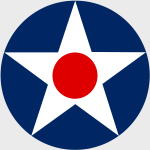Hobby Master HA7006 USN Brewster F2A Buffalo Fighter - VF-2 "Flying Chiefs", "2-F-1", USS Lexington (CV-2), 1940 (1:48 Scale)
"Why should we have a navy at all? There are no enemies for it to fight except apparently the Army Air Force."
- General Carl Spaatz, Commander of the US 8th Army Air Force, after WWII
 Built by the Brewster Aeronautical Corporation in Queens, New York City, the F2A Buffalo was the first production monoplane fighter to enter service with the US Navy. The F2A was an all-metal, single-engine, single-seat, mid-wing monoplane with retractable landing gear and a tail hook for carrier operations. The control surfaces, i.e., ailerons, elevators and rudder, were metal framed but covered with fabric. The struts of the hydraulically-operated landing gear retracted into the underside of the wing while the wheels fitted into the stubby fuselage below the wings. The tail hook was fully retractable into the rear fuselage while the tail-wheel partially retracted into the rear fuselage. Because of its short wingspan, the F2A did not need a folding wing configuration to be accommodated on U.S. aircraft carriers.
Built by the Brewster Aeronautical Corporation in Queens, New York City, the F2A Buffalo was the first production monoplane fighter to enter service with the US Navy. The F2A was an all-metal, single-engine, single-seat, mid-wing monoplane with retractable landing gear and a tail hook for carrier operations. The control surfaces, i.e., ailerons, elevators and rudder, were metal framed but covered with fabric. The struts of the hydraulically-operated landing gear retracted into the underside of the wing while the wheels fitted into the stubby fuselage below the wings. The tail hook was fully retractable into the rear fuselage while the tail-wheel partially retracted into the rear fuselage. Because of its short wingspan, the F2A did not need a folding wing configuration to be accommodated on U.S. aircraft carriers.
The Buffalo entered squadron service in the summer of 1940 and it was not long before three serious defects were identified. The first was the landing gear; it was not strong enough for carrier operations. Brewster strengthened two weak struts but a real fix would require a redesign of the aircraft. The second defect was identified by reports from Europe which indicated that the Buffalo did not meet the performance criteria of other aircraft then in combat, e.g., armor protection, self sealing fuel tanks, etc. Armor protection was added to the F2A-3 resulting in a heavier, unstable aircraft. One solution was to use a more powerful Pratt & Whitney engine but this would require a redesign of the aircraft. The third problem was the Brewster company management who had a habit of promising more than they could deliver resulting in serious delays in the deliveries of the aircraft. The final straw came when the Navy realized that the Grumman F4F-3 Wildcat was a superior aircraft in virtually every respect so no further Buffalos were ordered.
Pictured here is a 1:48 scale USN Brewster F2A Buffalo fighter assigned to VF-2, "2-F-1", then embarked upon the USS Lexington during 1940. Only 1,000 pieces produced and comes with numbered certificate of authenticity.
Sold Out!
Dimensions:
Wingspan: 8-3/4-inches
Length: 6-1/2-inches
Release Date: January 2008
Historical Account: "Lady Lex" - The fourth USS Lexington (CV-2), nicknamed the "Gray Lady" or "Lady Lex", was an early aircraft carrier of the United States Navy. She was the name ship of the Lexington class.
She and her sister ship Saratoga were originally authorized in 1916 as battle cruisers of 35,300 tons with seven funnels and boilers disposed on two deck levels. After the war, and as a result of the lessons thereof, plans were to a large extent re-cast in 1919. Designated CC-1 and CC-3, they were laid down as smaller battle cruisers on 8 January 1921 by Fore River Shipbuilding Company, Quincy, Massachusetts.
Following the Washington Naval Conference, they were both redesignated and re-authorized to be completed as aircraft carriers on 1 July 1922. As such, they were reduced in displacement by 8,500 tons, achieved mainly by the elimination of eight 16 inch (406 mm) guns in four twin turrets (including mounts, armor, and so on). The main belt armor was retained, and the deck armor was heavily reinforced. The general lines of the hull remained unaltered, and the special system of underwater protection was adhered to. The flight deck was 880 feet (244m) long and 85 to 90 feet (25.9-27.4m) wide, mounted 60 feet (18.3m) above the waterline. The mean draught was 24 feet 1.5 inches (7.4m). The ships had a complement of 169 officers and 1730 men, including flying personnel. They carried eight 8 inch (203 mm)/55 caliber guns, twelve 5-inch (127 mm)/25 caliber anti-aircraft guns, and four 6-pounder (2.24-inch, 57 mm) saluting guns. These two ships were the last two built with a transverse catapult as part of the original design. The catapult had a travel of 155 feet (47 m), and was strong enough to launch the heaviest naval aircraft then in existence within 60 feet (18.3m). As built, these two ships had cranes for launching and retrieving seaplanes and flying boats, a capability removed during the war and replaced by additional anti-aircraft guns. The ships were designed to carry a maximum of 120 aircraft of various types, including fighters, scouts, and bombers.


